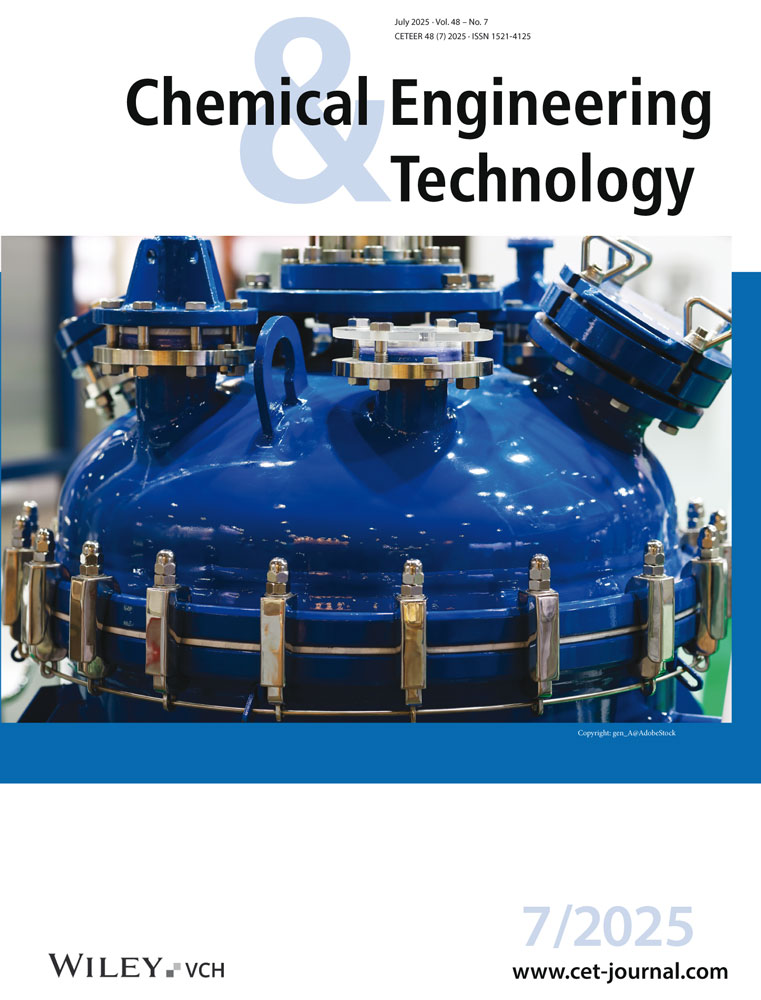Gas–Liquid Mass Transfer in a Three-Staged Contactor Consisting of Venturi and Cyclone
Abstract
A multi-cyclone separator was provided with combination of venturis and cyclones. The gas–liquid co-current and countercurrent modes of the multi-cyclone separator were proposed. The two modes can be converted by adjusting the gas channels. The countercurrent mode was achieved when the liquid flow ranged from 7.5 to 17.5 L min−1. For countercurrent mode, larger liquid flow is benefit for improving the gas circulation flow. There is a reasonable injected gas flow that makes the gas circulation flow reach peak value. There is a critical injection gas flow beyond which countercurrent cannot occur. In the limited range of gas–liquid countercurrent, the volumetric mass transfer coefficient and separation efficiency in countercurrent mode are better than that of co-current mode. When the injected gas flow is larger than the critical value, only the third stage mass transfer unit works as the performance of countercurrent mode will decrease sharply.




